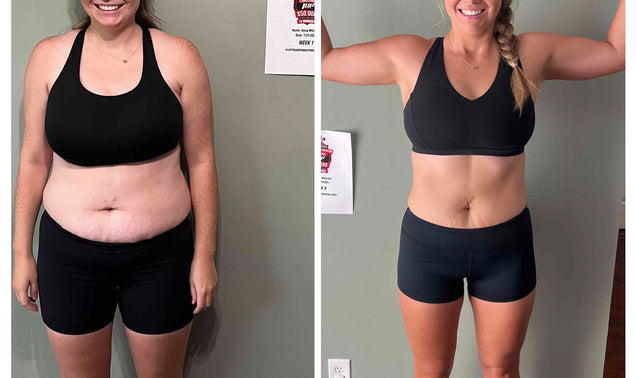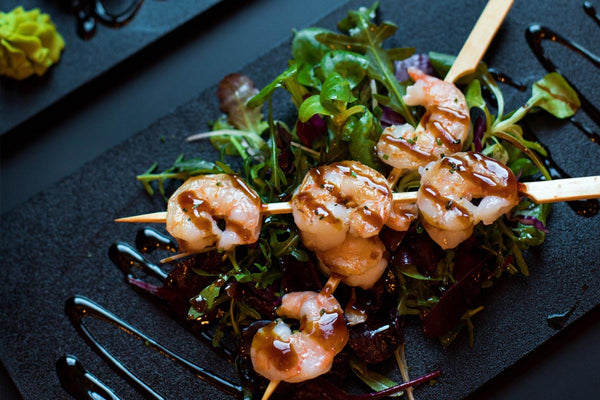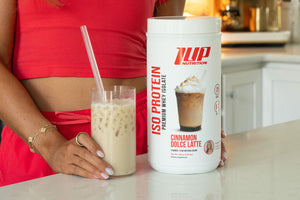People are eating out now more than ever before, and for many it’s a way of life. Part of the reason for this is that eating is supposed to be both enjoyable and social.
(Another reason is that we’re busier than ever these days and don’t dedicate as much time to cooking in the home, but that’s a story for a different day).
But, restaurant fare isn’t always as diet friendly as we might think it is.
To help you eat healthy at restaurants, we’ve come up with a list of our top 10 ways to stay on track with your nutrition plan when dining out.
Let’s get started!
10 Ways to Eat Healthy at a Restaurant
Plan Ahead
Most major restaurant chains these days provide their complete nutrition data on their website. And, if they don’t, they usually they’ll list the approximate calorie count of each dish at the very least.
As such, you can use this to your advantage and plan ahead for what you’re going to order at the restaurant. With this knowledge, you can configure the rest of your day’s nutrition plan such that your restaurant meal keeps you within your calorie limits for the day.
Now, it’s important to know that the nutrition info listed on restaurant websites are estimates. They are not exact measurements. The reason for this is pretty simple, the people preparing your food are humans, not robots.
As such, they may or may not be a little to generous with the oil, sugar, or other seasonings when preparing your dish.
But, so long as you have a rough idea of the caloric load of your entree you can plan smartly for the rest of the day so that your dining out option fits into your nutrition plan.
Plus, some of the other tips to come will help ensure that your meal is as close to the website info as possible.
Order First
No, we’re not suggesting you be rude or anything.
But, what others order may influence what you decide to eat.
Research has shown that an individual's eating preferences and behaviors can be heavily influenced by what other people at the table choose to eat.[1,2,3]
Basically, we may be more inclined (either consciously or subconsciously) to order an unhealthy option (chicken fingers and fries) over what we had originally planned to order in our efforts to “fit in” with the status quo and be part of the crowd.
To prevent this from happening, take the reins and order your meal first. That way you don’t have to worry about feeling out of place for ordering healthy fare.
And, as an added bonus, others at the table might be positively influenced by your healthy dining choice and order something healthy in lieu of what they were going to order originally.
Ask for Dressings and Sauces on the Side
Fancy sauces and dressings are delicious. They look great on the plate and they can make food taste all that more indulgent.
But, they also add a lot of extras (unnecessary) sugar, fat, and calories to your meals.
For example, a meager two tablespoons of salad dressing can easily add 150 calories (including 16 grams of fat) to your meal.
Furthermore, luxurious sauces also tend to make us eat more food than we typically would as we try to sop of every last drop of sauce from the plate, and in doing so, eat an entire loaf of bread with it!
And before you know it, you’ve blown through at least half of your daily calories needs in a single meal!
To help keep calories and fat in check, as for any sauces or dressings on the side. That way you can decide how much of it (if any) you choose to eat with your meal.
Pass (on) the Bread
Many restaurants offer you a free basket of warm dinner rolls or tortilla chips when you sit down at the table.
Most people immediately eat the complimentary goodies while waiting for their main courses to arrive, mindlessly munching giving very little thought to the hundreds of extra calories they're consuming.
While a nibble of bread or salty chip or two won’t completely derail your diet, few, if any, people have the restraint to stop after a single bite or two.
If you know that the restaurant you are going to offers complimentary bread or chips when you sit down to eat, simply tell the waiter (politely) that you do not want them.
This will save you a considerable chunk of calories and carbohydrates.
Opt for Grilled Over Fried
We won’t lie, when done right, fried food tastes delicious. It’s got the perfect mixture of salt, fat, and crunch that keeps us coming back for more...and more...and more.
But that deliciousness comes a hefty price as fried food is chock-full of fat, carbohydrates, and calories.
For instance, a single order of fried mozzarella sticks (4-5 sticks) contains between 450-500 calories, with the vast majority of it coming from carbohydrates and fat.
Another example is chicken breast. One fried chicken breast contains 390 calories while a similar sized grilled chicken breast contains only 220 calories.
The big difference between the two?
The fried option packs a lot more fat and carbs than the grilled option.
Bottom line -- opt for grilled options at restaurants. If a dish comes with a fried protein as the “standard” option, ask if you can have it grilled or broiled instead.
You’ll save a considerable chunk of calories and have a better chance of staying on track with your diet plan.
Don’t Be Afraid to Customize
Most restaurants are willing to accommodate a diner’s request if he/she asks. The thing is, most people are afraid to ask the server to alter the “standard” menu option and thus are stuck eating a higher-calorie meal than they’d prefer.
But, all it takes is a simple request, and you can drastically change the calorie count of your meal.
For example, french fries are a common side dish at most restaurants. The crunchy, salty, starchy, and incredibly easy to (over) eat. They’re also loaded with calories, fat, and carbohydrates and offer little nutritional value to your meal.
To save some calories and make your meal more healthful, ask the server if you can swap out the side of French fries for a baked potato, side salad (with the dressing on the side), or steamed vegetables.
Vegetables are great side dish substitution as they are low in calories, but packed with vitamins, minerals, water, and fiber (which helps fill you up).[4]
Plus, most people don’t consume enough vegetables each day.[5,6]
Why not take the opportunity to reduce the calorie content of your meal and increase your veggie intake at the same time?
Split an Entree
Most restaurant entrees are big enough (and contain enough calories) that they can easily feed (at least) two people. Splitting an entree with a friend, family member, or spouse can help you cut back on calories and prevent overeating.
In fact, research shows that sharing food, or ordering a half portion, when dining out helps people lose weight and keep it off.[7]
If no one wants to split an entree with you, ask the waiter to box half of it up before bringing your meal to the table.
This way you’re not only preventing yourself from overeating, but you’re also giving yourself another delicious meal during the week!
Thoroughly Chew Your Food
Research has shown that when people eat more slowly and thoroughly chew their food they feel fuller sooner and eat fewer calories.[8,9]
The reason for this is that it can take up to 20 minutes after you eat for the chemical signals in your body to reach your brain and instruct it that you’re full.
Eating slowly gives your brain time to catch up to how much you’ve eaten and help you avoid overeating.
To help yourself eat slower, try taking sips of water in between each bite of food, or put your utensils down between each bite, thereby giving your satiety hormones enough time to kick in.
Watch Out for Liquid Calories
Calorie-containing liquids (juices, sweet tea, mixed drinks, sodas) are some of the biggest contributors to “hidden” calories people consume on a daily basis. Just one mixed drink at a restaurant can easily contain as many as 300+ calories, the vast majority of which are nothing but sugar.
When you’re dining out, keep your drink options to plain water, sparkling water with a twist of lemon, or unsweet iced tea.
You’ll save yourself hundreds of calories.
If you do drink, try to keep it to one alcoholic beverage. And if you need help figuring out what the most calorie-friendly drinks are, check out our guide on “How to Count Calories from Alcohol.”
Have a Pre-Restaurant Protein Shake
Protein does a body good.
It provides the building blocks are body needs to build and repair muscle. It’s highly satiating, and our bodies expend more calories digesting it than either carbohydrates or fat.
As such, before heading out the door to dinner, why not have a quick, tasty, protein shake to help keep appetite in check and ensure that you’re consuming enough dietary protein (even if your restaurant meal doesn’t contain much protein)?
References
- Robinson, E., Thomas, J., Aveyard, P., & Higgs, S. (2014). What everyone else is eating: a systematic review and meta-analysis of the effect of informational eating norms on eating behavior. Journal of the Academy of Nutrition and Dietetics, 114(3), 414–429. https://doi.org/10.1016/j.jand.2013.11.009
- Cruwys, T., Bevelander, K. E., & Hermans, R. C. J. (2015). Social modeling of eating: a review of when and why social influence affects food intake and choice. Appetite, 86, 3–18. https://doi.org/10.1016/j.appet.2014.08.035
- Higgs, S. (2015). Social norms and their influence on eating behaviours. Appetite, 86, 38–44. https://doi.org/10.1016/j.appet.2014.10.021
- Slavin JL, Lloyd B. Health benefits of fruits and vegetables. Adv Nutr. 2012;3(4):506–516. Published 2012 Jul 6. doi:10.3945/an.112.002154
- Moore LV, Thompson FE. Adults Meeting Fruit and Vegetable Intake Recommendations - United States, 2013. MMWR Morb Mortal Wkly Rep. ;64(26):709–713.
- England, P. H., & Agency, F. S. (2012). National Diet and Nutrition Survey Results from Years 1 , 2 , 3 and 4 ( combined ) of the Rolling Programme About Public Health England, 4, 1–158.
- Kruger J, Blanck HM, Gillespie C. Dietary practices, dining out behavior, and physical activity correlates of weight loss maintenance. Prev Chronic Dis. ;5(1):A11.
- Shah, M., Copeland, J., Dart, L., Adams-Huet, B., James, A., & Rhea, D. (2014). Slower eating speed lowers energy intake in normal-weight but not overweight/obese subjects. Journal of the Academy of Nutrition and Dietetics, 114(3), 393–402. https://doi.org/10.1016/j.jand.2013.11.002
- Andrade AM, Kresge DL, Teixeira PJ, Baptista F, Melanson KJ. Does eating slowly influence appetite and energy intake when water intake is controlled?. Int J Behav Nutr Phys Act. 2012;9:135. Published 2012 Nov 21. doi:10.1186/1479-5868-9-135






